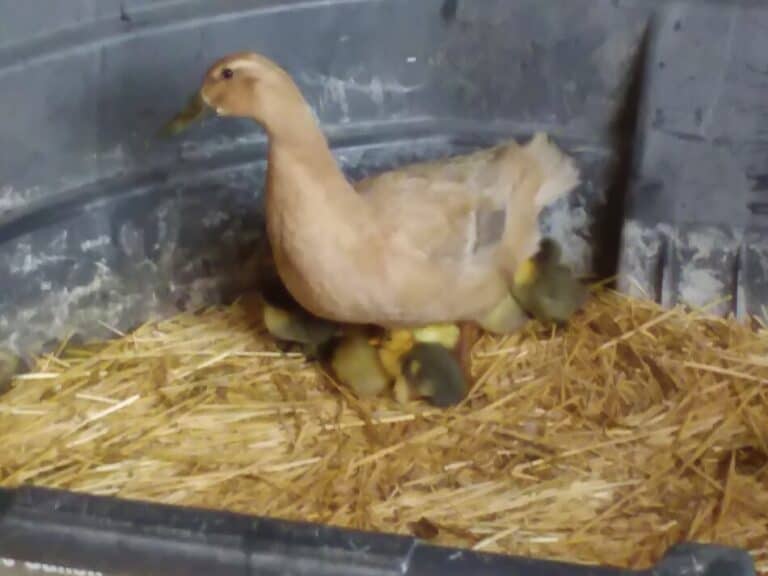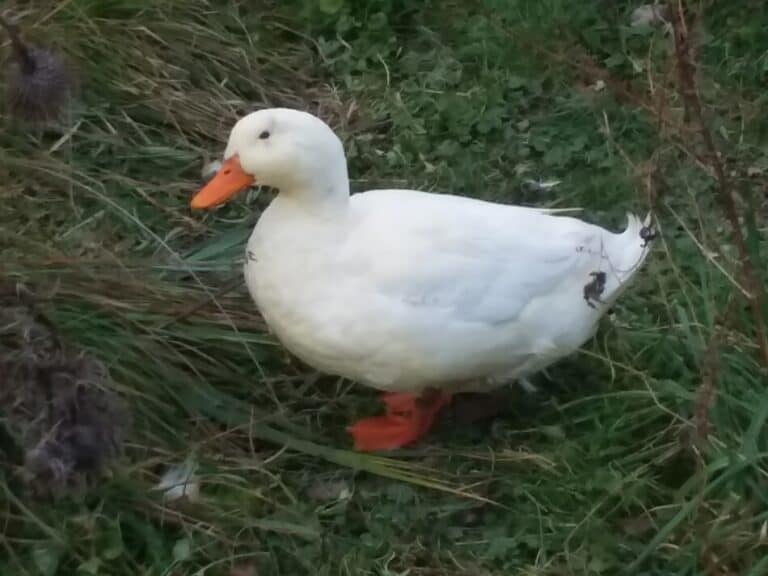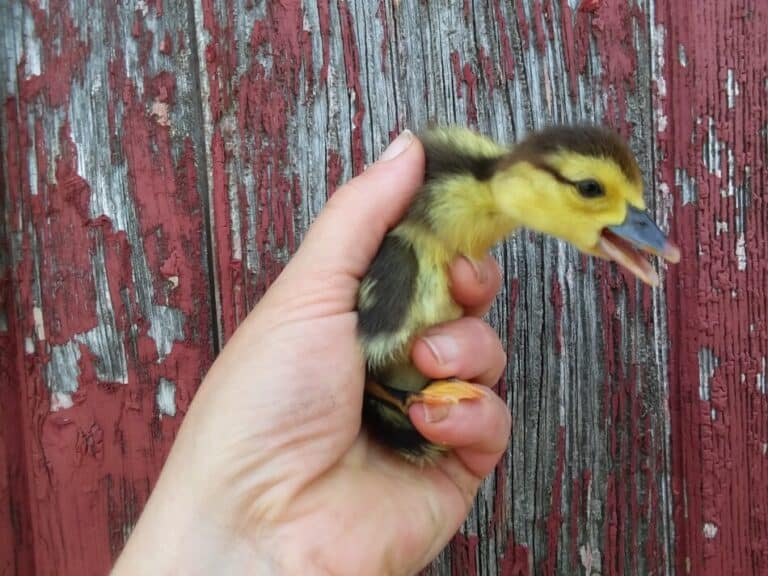Do You Have Enough Room To Raise Ducks?
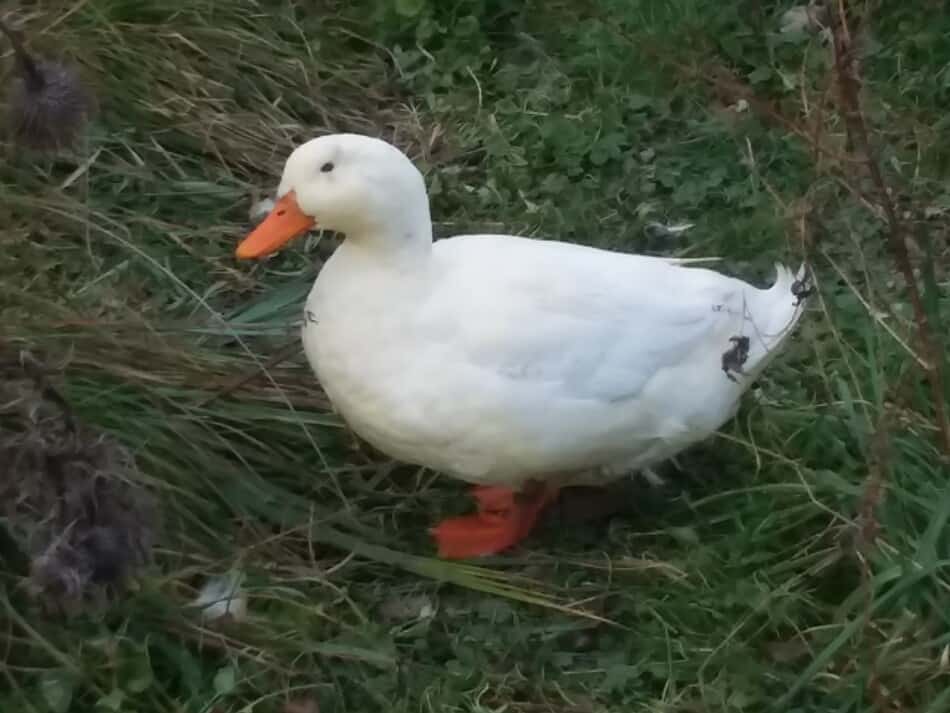
Raising a few ducks has become a popular idea for small farms and backyard poultry enthusiasts, alike.
Before you get your ducks, you need to know how much space they will need to have, both as ducklings and as full grown ducks.
Mature ducks need 4 sq. ft. of sheltered space per duck with a minimum of 24 sq. ft. per pen of ducks. Yard space or grazing area is provided in addition to these amounts.
| Age of ducks | Sheltered space needed (sq. ft. per duck) | Minimum total pen area (sq. ft. per group of ducks) |
| Up to 3 weeks | 1 | 5 |
| 4-8 weeks | 3 | 16 |
| 9-17 weeks | 3.5 | 20 |
| 18+ weeks | 4 | 24 |
Is Raising Ducks For Meat Worth It? is an article I wrote for anyone wanting the complete picture of the costs involved in raising your own meat ducks.
16 Duck Breeds For Eggs And Meat, is my duck breed overview, for anyone still undecided about which breed of ducks to raise.
Up to 3 weeks of age, ducklings need 1 sq. ft. of brooder space, each
When you first get your ducklings, they will need to be in a brooder. A brooder is simply a warm, secure area for the young ducklings to live.
In their brooder, day old to 3 week old ducklings need 1 sq. ft. of space each.
Please note that in the above table, there is a minimum area needed per group of ducklings.
In the case of young ducklings, the minimum area for the group is 5 sq. ft.
Even if you have 3 ducklings, which would need 3 sq. ft., because of the minimum area requirements the smallest space you’ll want to give them is 5 sq. ft.
If you have 5 or more ducklings, don’t worry about the minimum area, you’ll always be above the minimum.
If you have less than 5 ducklings, you’ll need to keep the minimum in mind to make sure your ducklings have enough space in their pen.
Please do not give your ducklings a pool!
Ducklings are great at getting into water but terrible at getting out of it. This means they drown, not joking.
Once your ducks are full size, they will love a pool, until then, no deal, waterers only.
At 4-8 weeks, ducklings need 3 sq. ft. each
Ducklings 4-8 weeks old need 3 sq. ft. each, with a group minimum of 16 sq. ft.
By the time your ducklings reach 4 weeks old, they will have grown quite a bit, but they still need to be in the brooder until they have all their feathers.
Gradually reduce the heat in the brooder, down 5 degrees every week, until the brooder is the same temperature as the overnight low.
Now your ducks are good to go as far as being acclimated to the ambient temperatures of your area.
Most people will be able to turn off the heat completely at 6 weeks or so, as long as the weather is cooperative and you have gradually reduced the heat given to the ducklings.

Fully feathered ducklings can go outside
If you want your ducks to get a significant amount of their diet from roaming around your yard or pasture, you can start letting them out to graze when they are fully feathered.
Full feathering happens between 6-8 weeks depending upon the breed of ducks you are raising.
They will still need a shelter, of course, but they are big enough to wander about and reliably find their way around an enclosed grassy area.
If you want your ducks to have access to grass before the 6-8 week mark, you can give them a smaller paddock that is attached to their brooder area, so they can easily walk out and back in themselves.
Or you can put them out for the day and lock them in the brooder at night.
Ducks 9-17 weeks need 7 sq. ft. each
Once your ducks hit 9 weeks, they need 7 sq. ft. each with a pen minimum of 20 sq. ft.
Your ducks are full size now and would love to be out cruising your yard for snacks.
If you have slugs, your ducks will be happy to eat them and all kinds of other bugs for you. Plus, ducks don’t scratch up the soil like chickens.
Once caution, ducks will eat newly sprouted plants in your garden, so keep them away from the smaller plants at first.
18+ week old ducks are sexually mature
Once your ducks hit 18 weeks old or so, they are mature enough to start breeding and laying eggs.
You’ll want to give them 4 sq. ft. per duck, with a minimum of 24 sq. ft. for the group.
Even though these ducks are fully grown, they will need a shelter.
Ducks are surprisingly tough when it comes to cold weather, but like the shade in the heat and to be sheltered from the direct rain and wind.
Once your ducks know where their house is, they will put themselves in it before the bad weather hits and for the night, especially if you feed them in the shelter.
Since these ducks are full size, as long as they can choose where to hang out, don’t worry about them. They’ll do what is right for them at the time.
Grazing ducks need 25 sq. ft. per duck every 2-3 days
If you want your ducks to get a larger portion of their diet from grazing, they need to have something like 25 sq. ft. per duck every 2-3 days.
If you have 3 ducks, this would be an area of 75 sq. ft. every 3 days, which is an 8×10 foot area.
If you are planning on moving the ducks every 6-7 days, have about 150 sq. ft. for your 3 ducks.
This would be for ducks doing quite a bit of grazing and getting moved through the grazing area frequently.
If you don’t have this much area, don’t worry.
As long as you are willing to feed your ducks they will snack on the grass but get most of their calories from feed when the yard isn’t enough.
Moving ducks through yard sections increases grass growth
Moving the ducks through the grass in sections leaves the other parts of the grass to grow back.
Rotating your ducks is not mandatory, but will make your grass grow better and your yard look nicer.
The grazed areas need a break to regrow and recover.
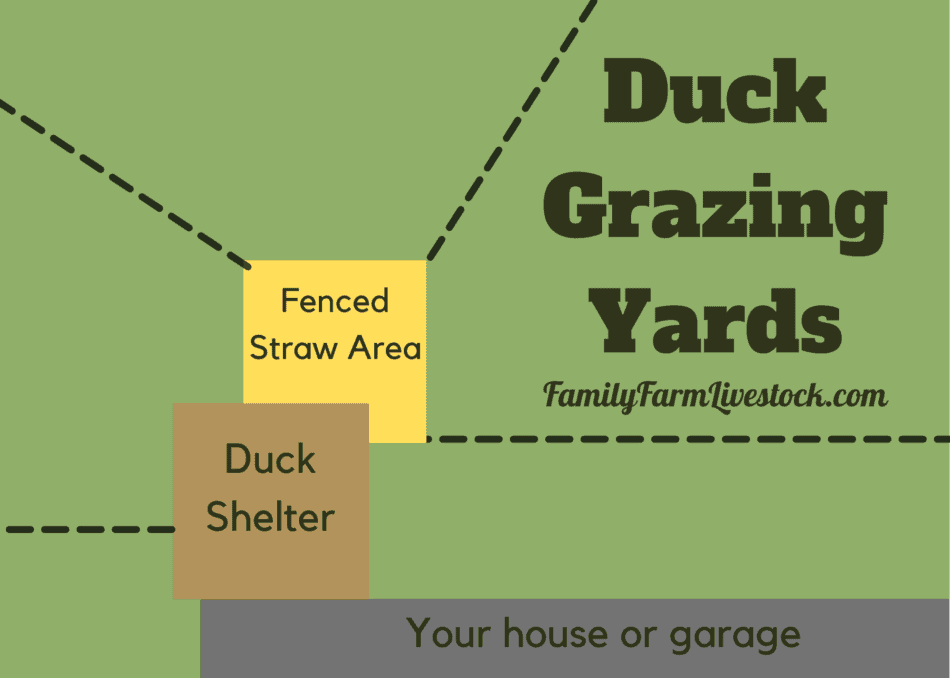
Divide your grass into duck grazing yards
An example of how to divide up your yard is in the diagram above. The idea being to give the ducks grass to eat but keep them from tromping down all of the grass.
We are basically giving them some grass for now and saving some grass for later.
Note the fenced straw area. For larger livestock, this area is called a sacrifice area.
A sacrifice area is an area that you confine the ducks to in bad grazing conditions.
This area will get beat up a bit, but it will also save the growing ability of the rest of the grassy areas.
This is for the days when the yard is too wet for the ducks to be in the grassy part of the yard but you still want them to have some outside time.
You can divide your yard any way you please.
The big idea here is to give access from the straw yard or the shelter to the grass so the ducks can walk to the grazing themselves.
Constant grazing by your ducks will reduce grass growth
Constant grazing pressure will be hard on your grass, if you have more ducks than the area can easily support.
If you have less than an ideal amount of space for your ducks, that’s okay, just realize they will tramp down the grass in their pen area.
If you have a large yard for your ducks, you’ll hardly notice they are in it. If your spacing is tight, you’ll notice their work pretty quickly!
Resources:
Metzer Farms How Much Space To Raise Ducks? for the square footages used in the table
Duck Breed Trial by Joella and Tyler Neff is the source of the grazing area square footages.

